Stefan Bojowald
« Vier neue Beispiele fuÌr Ă€gyptische Kurzschreibungen mit âbâ »
ENiM 8, 2015, p. 33-36.
 Cet article Ă©tudie quatre nouveaux exemples de lâĂ©criture abrĂ©gĂ©e par âbâ. Le premier exemple montre que âbâ pouvait remplacer âḥbâ âfĂȘteâ. Le deuxiĂšme consiste en lâĂ©criture âb.tâ pour âʿb.tâ âlaitueâ, comme cela est discutĂ© par les chercheurs depuis quelque temps ; le spectre est ici Ă©largi par trois nouvelles interprĂ©tations. Le quatriĂšme et dernier exemple est âbâ pour âbȝqâ âbriller, ĂȘtre clairâ. Autant que possible, les explications sont phonĂ©tiques.
Cet article Ă©tudie quatre nouveaux exemples de lâĂ©criture abrĂ©gĂ©e par âbâ. Le premier exemple montre que âbâ pouvait remplacer âḥbâ âfĂȘteâ. Le deuxiĂšme consiste en lâĂ©criture âb.tâ pour âʿb.tâ âlaitueâ, comme cela est discutĂ© par les chercheurs depuis quelque temps ; le spectre est ici Ă©largi par trois nouvelles interprĂ©tations. Le quatriĂšme et dernier exemple est âbâ pour âbȝqâ âbriller, ĂȘtre clairâ. Autant que possible, les explications sont phonĂ©tiques.
 In this paper, four further Egyptian spellings with âbâ are scrutinized. In the first case, it be-comes clear, that âbâ can stand for âḥbâ âfeastâ. In the second one, it will be demonstrated that â according previous explanations â âb.tâ may be an abbreviation for âʿb.tâ = âʿbwâ âlet-tuceâ. Here, three other alternatives are suggested. In the third case, it will be shown that âbâ can be used for âwʿbâ âwʿbâ-priest. The fourth example is represented by the writing âbâ for âbȝqâ âbright, shiningâ.
In this paper, four further Egyptian spellings with âbâ are scrutinized. In the first case, it be-comes clear, that âbâ can stand for âḥbâ âfeastâ. In the second one, it will be demonstrated that â according previous explanations â âb.tâ may be an abbreviation for âʿb.tâ = âʿbwâ âlet-tuceâ. Here, three other alternatives are suggested. In the third case, it will be shown that âbâ can be used for âwʿbâ âwʿbâ-priest. The fourth example is represented by the writing âbâ for âbȝqâ âbright, shiningâ.
 Consulter cet article (51744) -
Consulter cet article (51744) -  Télécharger cet article au format pdf (28128)
Télécharger cet article au format pdf (28128)
« Ein weiteres Detail zum Ă€gyptischen Ćnfr.w-Vogels in den GrĂ€bern des HwyÈ, IÊżáž„-mĆ und Mry-RÊż zu Amarna »
ENiM 14, 2021, p. 323-327.
 La prĂ©sente contribution poursuit la discussion sur le nom dâoiseau Ă©gyptien ?nfr.w. Le mot apparaĂźt dans trois tombes privĂ©es dâAmarna. La connexion suggĂ©rĂ©e prĂ©cĂ©demment avec le corbeau est renforcĂ©e par trois nouveaux exemples. Les deux premiers proviennent de lâEspagne mauresque, tandis que le troisiĂšme exemple est dâorigine indienne. La beautĂ© du plumage noir joue le rĂŽle dĂ©cisif.
La prĂ©sente contribution poursuit la discussion sur le nom dâoiseau Ă©gyptien ?nfr.w. Le mot apparaĂźt dans trois tombes privĂ©es dâAmarna. La connexion suggĂ©rĂ©e prĂ©cĂ©demment avec le corbeau est renforcĂ©e par trois nouveaux exemples. Les deux premiers proviennent de lâEspagne mauresque, tandis que le troisiĂšme exemple est dâorigine indienne. La beautĂ© du plumage noir joue le rĂŽle dĂ©cisif.
 The present contribution continues the discussion of the Egyptian bird name snfr.w. The word occurs in three private tombs from Amarna. The previously suggested connection with the raven is supported by three new examples. The first two examples come from Moorish Spain, while the third example is of Indian origin. The beauty of the black plumage plays the decisive role.
The present contribution continues the discussion of the Egyptian bird name snfr.w. The word occurs in three private tombs from Amarna. The previously suggested connection with the raven is supported by three new examples. The first two examples come from Moorish Spain, while the third example is of Indian origin. The beauty of the black plumage plays the decisive role.
 Consulter cet article (37500) -
Consulter cet article (37500) -  Télécharger cet article au format pdf (19415)
Télécharger cet article au format pdf (19415)
« Ein neues Detail zum Ă€gyptischen Pfortenbuch Neunte Stunde, Oberes Register, 55. Szene »
ENiM 15, 2022, p. 213-215.
 Dans cette contribution, est poursuivie lâinterprĂ©tation du Livre des Portes, neuviĂšme heure, registre supĂ©rieur, scĂšne 55. Au centre du dĂ©bat se trouve le verbe « ?w? », pour lequel est proposĂ© le sens « se lever ». LâidĂ©e de « parler en Ă©tant debout » peut ĂȘtre sauvegardĂ©e par un parallĂšle ougaritique.
Dans cette contribution, est poursuivie lâinterprĂ©tation du Livre des Portes, neuviĂšme heure, registre supĂ©rieur, scĂšne 55. Au centre du dĂ©bat se trouve le verbe « ?w? », pour lequel est proposĂ© le sens « se lever ». LâidĂ©e de « parler en Ă©tant debout » peut ĂȘtre sauvegardĂ©e par un parallĂšle ougaritique.
 In this contribution, the interpretation of Book of the Gates, Ninth Hour, Upper register, Scene 55 is continued. At the centre of the debate is the verb â?w?â, in which case the meaning âstand up, riseâ is pleaded for. Speaking while standing can be safeguarded by an Ugaritic parallel.
In this contribution, the interpretation of Book of the Gates, Ninth Hour, Upper register, Scene 55 is continued. At the centre of the debate is the verb â?w?â, in which case the meaning âstand up, riseâ is pleaded for. Speaking while standing can be safeguarded by an Ugaritic parallel.
 Consulter cet article (36121) -
Consulter cet article (36121) -  Télécharger cet article au format pdf (16431)
Télécharger cet article au format pdf (16431)
« Einige Gedanken zum metaphorischen VerhĂ€ltnis zwischen Frau und Feld in der Ă€gyptischen Sprache »
ENiM 15, 2022, p. 287-294.
 Dans cette contribution, est Ă©tudiĂ©e la relation entre la femme et le champ dans la langue Ă©gyptienne. La documentation montre clairement que lâassociation « joue » dans les deux directions. Le tertium comparationis rĂ©side dans lâaspect de fĂ©conditĂ©. Les exemples couvrent une pĂ©riode qui sâĂ©tend de lâAncien Empire Ă la pĂ©riode grĂ©co-romaine.
Dans cette contribution, est Ă©tudiĂ©e la relation entre la femme et le champ dans la langue Ă©gyptienne. La documentation montre clairement que lâassociation « joue » dans les deux directions. Le tertium comparationis rĂ©side dans lâaspect de fĂ©conditĂ©. Les exemples couvrent une pĂ©riode qui sâĂ©tend de lâAncien Empire Ă la pĂ©riode grĂ©co-romaine.
 In this contribution, the relationship between woman and field in the Egyptian language is investigated. The material shows very clearly that the association has worked in both directions. The idea presents itself, that the tertium comparationis can be found in the aspect of fecundity. The examples cover a timespan stretching from the Old Kingdom to the Greco-Roman Period.
In this contribution, the relationship between woman and field in the Egyptian language is investigated. The material shows very clearly that the association has worked in both directions. The idea presents itself, that the tertium comparationis can be found in the aspect of fecundity. The examples cover a timespan stretching from the Old Kingdom to the Greco-Roman Period.
 Consulter cet article (29252) -
Consulter cet article (29252) -  Télécharger cet article au format pdf (14044)
Télécharger cet article au format pdf (14044)
« Einige vorlĂ€ufige Bemerkungen zum Ă€gyptischen Lautwandel zwischen âáž„â und ânâ »
ENiM 16, 2023, p. 43-46.
 Dans cette contribution, le changement de son en Ă©gyptien entre « ? » et « n » est examinĂ© plus en dĂ©tail. La recherche nâa pas encore accordĂ© beaucoup dâattention Ă ce phĂ©nomĂšne. Dans cet article, neuf exemples sont prĂ©sentĂ©s pour illustrer ce phĂ©nomĂšne phonĂ©tique.
Dans cette contribution, le changement de son en Ă©gyptien entre « ? » et « n » est examinĂ© plus en dĂ©tail. La recherche nâa pas encore accordĂ© beaucoup dâattention Ă ce phĂ©nomĂšne. Dans cet article, neuf exemples sont prĂ©sentĂ©s pour illustrer ce phĂ©nomĂšne phonĂ©tique.
 In this contribution, the Egyptian sound change between â?â and ânâ is examined in more detail. Research has not yet paid much attention to the phenomenon. In this article, nine examples are presented to illustrate this phonetic phenomenon.
In this contribution, the Egyptian sound change between â?â and ânâ is examined in more detail. Research has not yet paid much attention to the phenomenon. In this article, nine examples are presented to illustrate this phonetic phenomenon.
 Consulter cet article (34119) -
Consulter cet article (34119) -  Télécharger cet article au format pdf (11860)
Télécharger cet article au format pdf (11860)
« Zu einigen Schreibungen der Ă€gyptischen PrĂ€position áž„nÊż âzusammen, mitâ »
ENiM 16, 2023, p. 105-110.
 Dans cette contribution, plusieurs Ă©critures de la prĂ©position Ă©gyptienne ?n? « ensemble, avec » sont analysĂ©es. Comme nous lâavons montrĂ©, un nombre important dâĂ©critures dĂ©fectueuses sont attestĂ©es. Dâautres graphies ont Ă©tĂ© influencĂ©es par des facteurs extĂ©rieurs qui sont commentĂ©s.
Dans cette contribution, plusieurs Ă©critures de la prĂ©position Ă©gyptienne ?n? « ensemble, avec » sont analysĂ©es. Comme nous lâavons montrĂ©, un nombre important dâĂ©critures dĂ©fectueuses sont attestĂ©es. Dâautres graphies ont Ă©tĂ© influencĂ©es par des facteurs extĂ©rieurs qui sont commentĂ©s.
 In this contribution, several writings of the Egyptian preposition ?n? âtogether, withâ are discussed. As shown, a significant number of defective writings has happened in this case. Other writings have been influenced by exterior factors which are commented on.
In this contribution, several writings of the Egyptian preposition ?n? âtogether, withâ are discussed. As shown, a significant number of defective writings has happened in this case. Other writings have been influenced by exterior factors which are commented on.
 Consulter cet article (35768) -
Consulter cet article (35768) -  Télécharger cet article au format pdf (11609)
Télécharger cet article au format pdf (11609)
« Neue Beispiele fuÌr den Wegfall von âbâ in der Ă€gyptischen Sprache »
ENiM 17, 2024, p. 55-59.
 Cette contribution consacre une attention particuliĂšre Ă la faiblesse de la consonne Ă©gyptienne « b ». Le phĂ©nomĂšne est connu depuis au moins un demi-siĂšcle. Le nombre dâexemples est ici augmentĂ© de maniĂšre significative. On constate que la perte du « b » peut se trouver Ă nâimporte quel endroit dâun mot.
Cette contribution consacre une attention particuliĂšre Ă la faiblesse de la consonne Ă©gyptienne « b ». Le phĂ©nomĂšne est connu depuis au moins un demi-siĂšcle. Le nombre dâexemples est ici augmentĂ© de maniĂšre significative. On constate que la perte du « b » peut se trouver Ă nâimporte quel endroit dâun mot.
 This contribution devotes special attention to the weakness of the Egyptian consonant âbâ. The phenomenon has been known for at least half a century. Here, the number of examples is increased significantly. It is found that the loss of âbâ can be encountered at any position in the word.
This contribution devotes special attention to the weakness of the Egyptian consonant âbâ. The phenomenon has been known for at least half a century. Here, the number of examples is increased significantly. It is found that the loss of âbâ can be encountered at any position in the word.
 Consulter cet article (30594) -
Consulter cet article (30594) -  Télécharger cet article au format pdf (10409)
Télécharger cet article au format pdf (10409)
« Ăberlegungen zu den Schreibungen des Ă€gyptischen Wortes Èpd âVogelâ »
ENiM 17, 2024, p. 262-272.
 Cet essai examine lŽorthographe du mot égyptien Apd « oiseau ». Au total, vingt-et-un exemples sont collectés. Le matériel est évalué graphiquement et phonétiquement.
Cet essai examine lŽorthographe du mot égyptien Apd « oiseau ». Au total, vingt-et-un exemples sont collectés. Le matériel est évalué graphiquement et phonétiquement.
 This essay examines the Egyptian spellings of the word Apd âbirdâ. Twenty-one examples are collected as a whole. The material is evaluated graphically and phoneticallyâ
This essay examines the Egyptian spellings of the word Apd âbirdâ. Twenty-one examples are collected as a whole. The material is evaluated graphically and phoneticallyâ
 Consulter cet article (22896) -
Consulter cet article (22896) -  Télécharger cet article au format pdf (8030)
Télécharger cet article au format pdf (8030)
ENiM 18 - 2025
6 article(s) - 1 septembre 2025.
ENiM 1 à 18 (2008-2025) : 225 articles
4 965 347 téléchargements
9 971 550 consulations.
Index des auteurs

Mots clés

Derniers articles : 
Robert Steven Bianchi
Duplication and Continuity
(ENiM 18, p. 13-36 — 11 mars 2025) 
CENiM - Mise en ligne des volumes Ă©puisĂ©s : 
 Anne-Sophie von BOMHARD DĂ©cans Ă©gyptiens, CENiM 23, Montpellier, 2020 — (2020)
Anne-Sophie von BOMHARD DĂ©cans Ă©gyptiens, CENiM 23, Montpellier, 2020 — (2020) 
 Jean-Claude Grenier L'Osiris ANTINOOS, CENiM 1, Montpellier, 2008 — (26 dĂ©cembre 2008)
Jean-Claude Grenier L'Osiris ANTINOOS, CENiM 1, Montpellier, 2008 — (26 dĂ©cembre 2008) 
TDENiM - Mise en ligne des volumes Ă©puisĂ©s : 
 Twitter
Twitter 3999464 visites - 7566 visite(s) aujourd’hui - 339 connecté(s)
© ENiM - Une revue d’égyptologie sur internet
Équipe Égypte Nilotique et Méditerranéenne - UMR 5140 - « Archéologie des Sociétés Méditerranéennes » (Cnrs) - Université Paul Valéry - Montpellier III
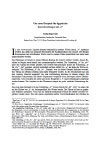
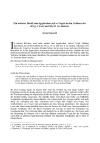
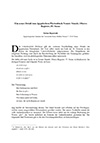
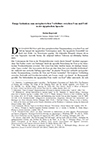
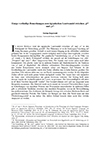
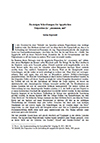
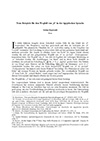
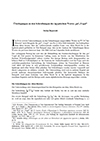





















 Contact
Contact
 Abonnez-vous !
Abonnez-vous ! Équipe Égypte Nilotique et Méditerranéenne
Équipe Égypte Nilotique et Méditerranéenne UMR 5140 « Archéologie des Sociétés Méditerranéennes » (Cnrs)
UMR 5140 « Archéologie des Sociétés Méditerranéennes » (Cnrs) Université Paul Valéry - Montpellier III
Université Paul Valéry - Montpellier III